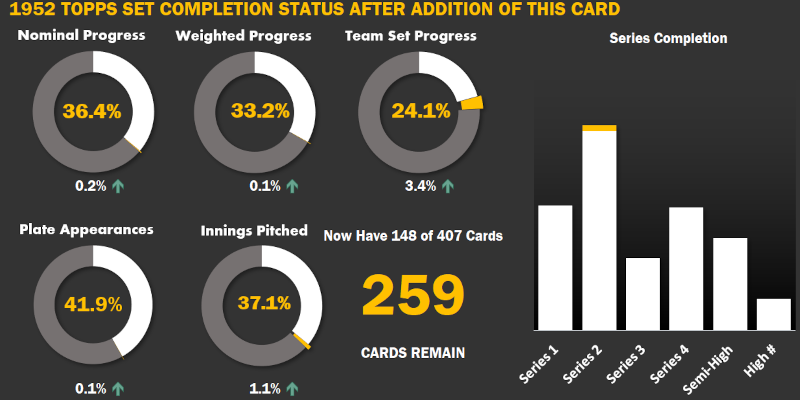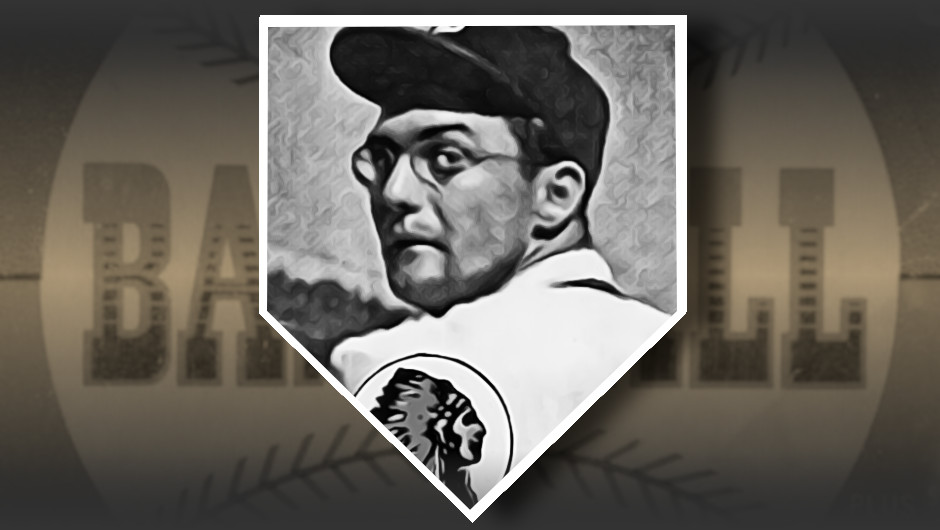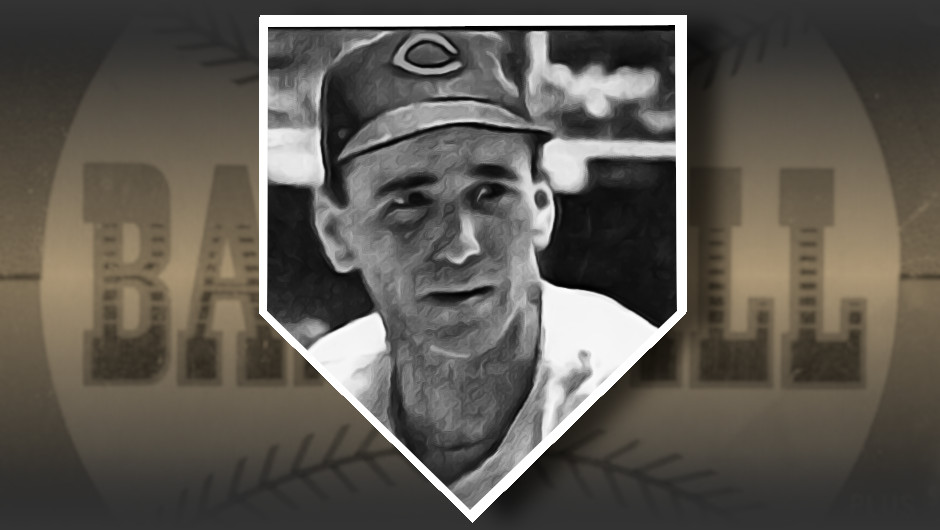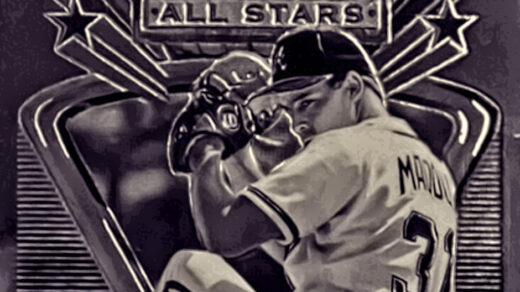This was the first 1952 Topps card I ever acquired, paying something like $5 for it in the early 1990s. I picked this one up in 2022 for the same price thirty years later. Both might have been overpaying, but it is a card I have always liked. The horizontal layout is great and the inclusion of an umpire or player in the background is fantastic. It is an all-around well composed card.
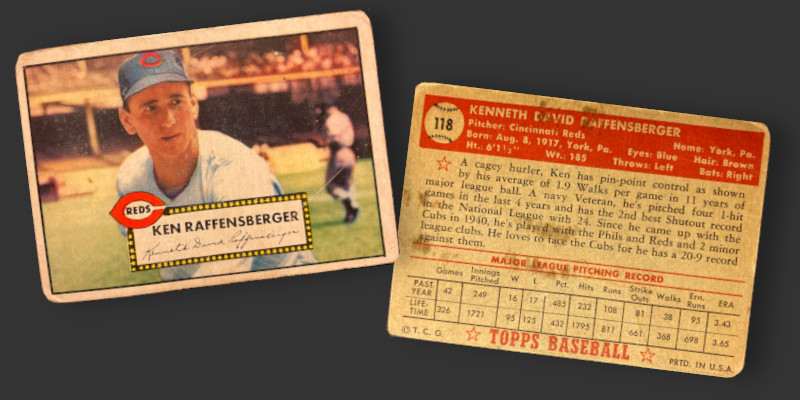
Ken Raffensberger made a good case for himself despite playing for losing teams. After pitching one inning for the 1939 St. Louis Cardinals, he played the entirety of his remaining career for teams with losing records. He was a control artist, posting of the lowest walk rates per 9 innings among players of his era. He didn’t have much of a fastball, but he had an array of off-speed pitches that he combined with multiple deliveries and his trademark accuracy to great effect. Stan Musial referred to him as one of the toughest pitchers he ever faced. The on base percentage of opposing players was kept below .300 over the course of his career.
Born more than a century ago, Raffensberger turned pro in 1939 and was already a veteran when this card was produced. Poor run support was the primary drag on his career numbers, a problem made evident by the list of teams mentioned on his ’52 Topps biography. He strung together 8 consecutive losing seasons in the 1940s while playing for the Reds, Cubs, and Phillies.
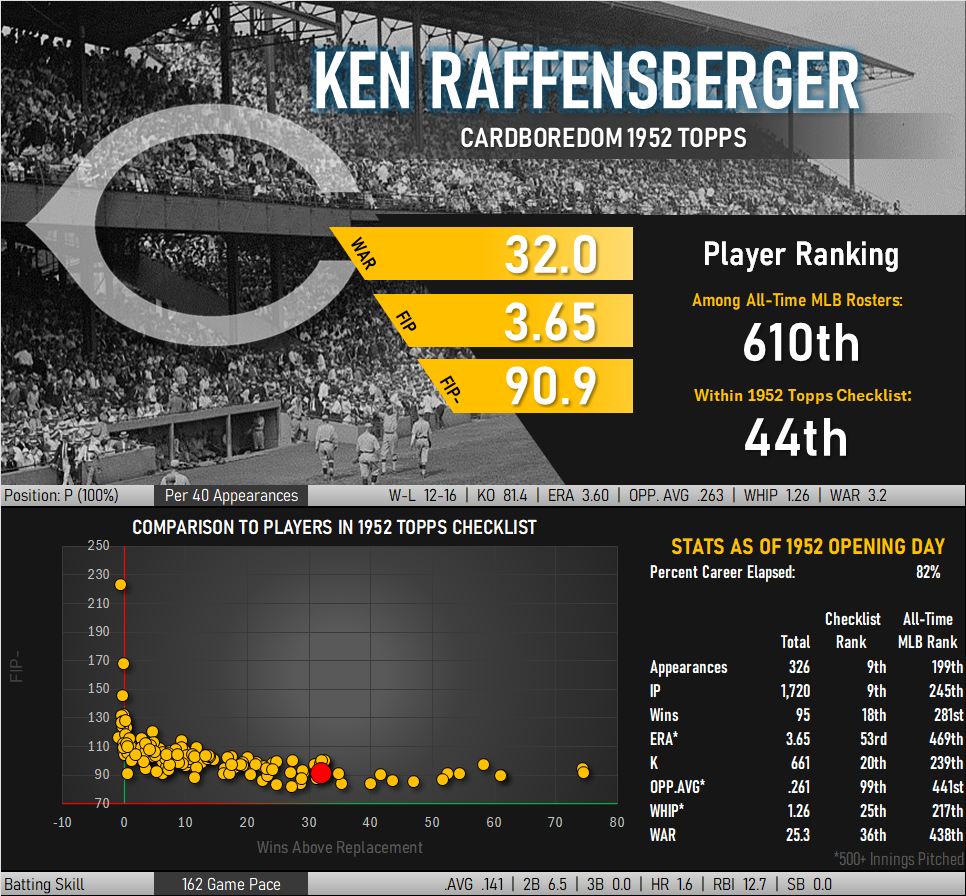
Raffensberger’s name reminds me of another Cubs legend: Henry Rowengartner. The 12-year-old from The Rookie has a name that barely fits on his jersey and gives the manager fits trying to pronounce it when calling him out of the bullpen. Rowengartner is referred to as Gardenhoser, Rosinbagger, and Runnamucker. Calling the kid Raffensberger would have been a nice throwback to Chicago pitching.
